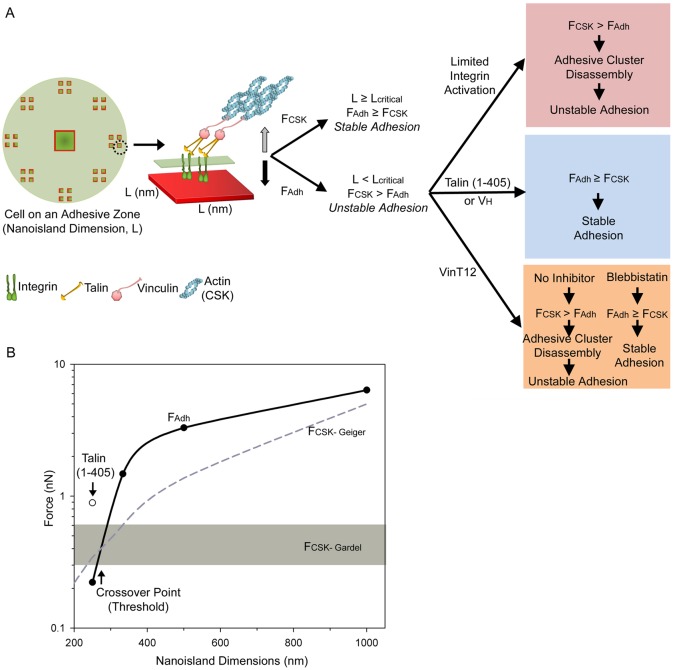Fig. 8.
Force equilibrium model for ECM-area-regulated assembly of integrin–FN clusters. (A) On nanoislands (side dimension L), activated integrins bind to FN and assemble into small adhesive clusters containing talin and vinculin. The stability of these nascent adhesive clusters is dependent on the balance between the force of integrin–FN adhesion (FAdh) and the cytoskeleton-mediated tensile force (FCSK). For nanoislands with dimensions larger than the threshold area (L≧Lcritical), the integrin–FN adhesive force can support the applied cytoskeletal tension and stable integrin–FN clusters assemble on nanoislands. For nanoislands with dimensions smaller than the threshold area (L≤Lcritical), the applied cytoskeletal tension exceeds the integrin–FN adhesive force and no stable integrin–FN complexes are assembled. Recruitment of talin/vinculin and modulation of the applied cytoskeletal tension to the integrin–FN clusters alters the force equilibrium to regulate integrin–FN complex assembly. (B) Plot for FAdh and FCSK as a function of nanoscale area showing area threshold (cross-over point). FAdh (solid black line) was derived from experimental adhesion strength values (filled circles); open circle shows the FAdh for talin1(1–405)-expressing cells. Estimates for FCSK based on the work of Gardel and colleagues (Stricker et al., 2011) are shown as a gray box and those based on the work of Geiger and colleagues (Balaban et al., 2001) are shown as a dashed line (see text).

